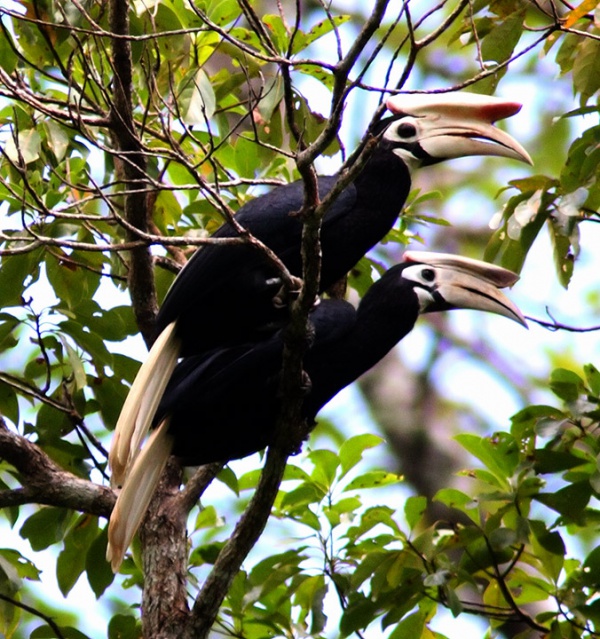Facts About Palawan hornbill
The Palawan hornbill, known as Talusi in the Cuyunon language, is a striking bird endemic to Palawan Island in the Philippines. Adorned with predominantly black feathers, a white tail, and a dark green sheen on its upper parts, this bird stands out with its large, creamy-white beak crowned by a distinctive hornbill casque. Its calls are loud and unmistakable, resembling "kaaww" and "kreik-kreik."
Among the nine hornbill species found in the Philippines, the Palawan hornbill holds a unique significance. While it predominantly inhabits Palawan, it is also encountered on nearby islands such as Balabac, Busuanga, Calauit, Culion, and Coron. Birdwatchers flock to St. Paul’s National Park in Palawan for a chance to observe this bird, although sightings have become increasingly rare. The Palawan hornbill serves as a bio-indicator due to its sensitivity to environmental changes and is classified as "vulnerable" due to habitat destruction, hunting, and the live bird trade.
This hornbill’s diet primarily consists of fruit, but it also consumes insects and small vertebrates. Its role in the ecosystem is crucial, particularly for seed dispersal of large-seeded trees, owing to its size and extensive range. In areas where hornbill populations have declined, ground-dwelling seed-eating mammals threaten tree survival by consuming many of the fallen seeds.
Typically observed in pairs or small family groups, Palawan hornbills utilize communal roosting sites and are often seen in fruiting trees at the forest edge. They also feed on insects and small reptiles, making them an integral part of their forest ecosystem.
